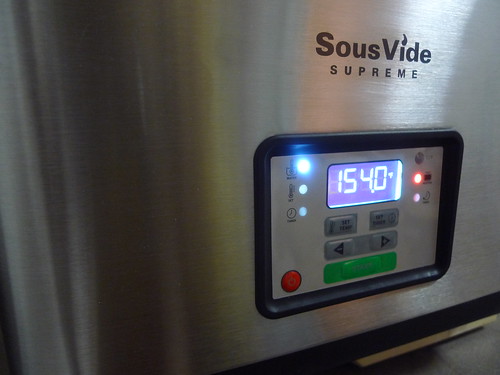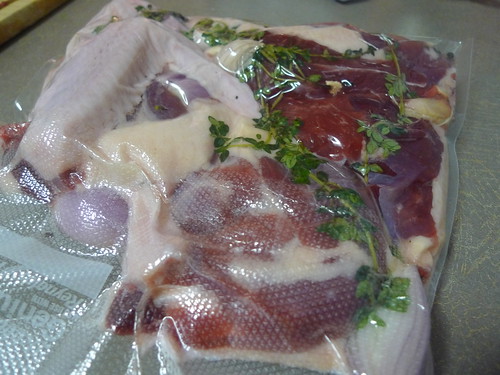After a harrowing ten-hour trip from Chicago, the Dr. was craving kalbi-tang, or Korean short beef rib soup, the next day. We had stopped by Joong Boo Market on Belmont Avenue before we continued to the airport and among our purchase was a package of fresh perilla leaves. I thought of gamja-tang, pork rib soup, because it’s what I always order when I’m in Hanbat in Koreatown. I ended up buying short beef ribs and beef neck bones and then using a pork-rib recipe. I think combining the two soups in this one recipe was a pretty good compromise even though Maangchi may slap my hand if she ever reads this.
If we knew we were to spend all afternoon and all night trying to fly back to New York City–our flight was cancelled without any notification and all 180 passengers were vying for the next three flights to La Guardia–we would have bought the soups from the market’s deli and enjoyed them at the airport.
Finally home and caught up on sleep the next night, I searched for online recipes for both soups. All of them require boiling the bones and then rinsing them before boiling again. This step removes all the impurities and the fat from the boiled bones, but it’s sacrilege if you’re Filipino because it’s the fat that makes my people’s soups whole. Sometimes though, I do what I’m told even if the order comes from an older Korean lady. To keep my stubborn streak however, I skipped an extra rinsing step so at least some of the fat is preserved in the broth.
Needless to say, I scared the crap out of the Dr. who was impressed with how the soup turned out: he had two full large bowls for dinner while the negative aspect of our Chicago trip dissolved in pieces.
Ingredients:
5 short beef ribs, rinsed
4 beef neck bones, rinsed
5 perilla leaves, chopped in 1-inch pieces
1 napa cabbage, sliced into 4 pieces
2 potatoes, peeled, sliced
1 bunch of scallions, chopped
4 pieces dried shiitake mushrooms
1 large knob of ginger, peeled, chopped
1 yellow onion, quartered
2 tbsps soy bean pasteSauce:
5 perilla leaves, chiffonade
6 cloves of garlic, minced
a dash of hot pepper flakes
2 tbsps hot pepper paste
4 tbsps cooking wine
3 tbsps fish sauce1. In a large Dutch oven, boil some water. Add the beef ribs and neck bones. Lower the heat and let impurities rise to the top. Using a strainer, remove the impurities and discard. Simmer beef for a total of an hour before rinsing them out with cold water.
2. In the same washed Dutch oven, return the beef with some more water. Add ginger, onion, soy bean paste and mushrooms. Simmer for another hour.
3. In the meantime, in a separate pot, boil some water and blanch the cabbage for a minute. Remove from the pot, squeeze out the water and set aside.
4. Make the sauce as well while you’re boiling the beef. Combine all sauce ingredients and mix thoroughly. Set aside until needed.
5. When the beef is done, remove the mushrooms and let cool. Slice them and return to the pot with the rest of the vegetables. Cook for another 30 minutes in low-medium fire to make sure most of the meat is falling off the bones and the potatoes are cooked.
Related post/s:
What do you mean you don’t know who Maangchi is?
I made kalbitang before, but not as involved
I served this with my very own kimchi








